Scoping Report & Sears
Preparation of Environmental Impact Statement (EIS)
Estimated Submission of EIS
Public Exhibition of EIS
28 Days for Submissions from the Community and Stakeholders. The Exhibition Period has been extended till 23/1/2023.
Independent Assessment
As this Project has had a large amount of objections, it has now been referred to the Independent Planning Commission (IPC) for determination
WE ARE HERE
Winterboune Wind response to submissions
Assessment & Determination
Estimated start of construction

Add your details here
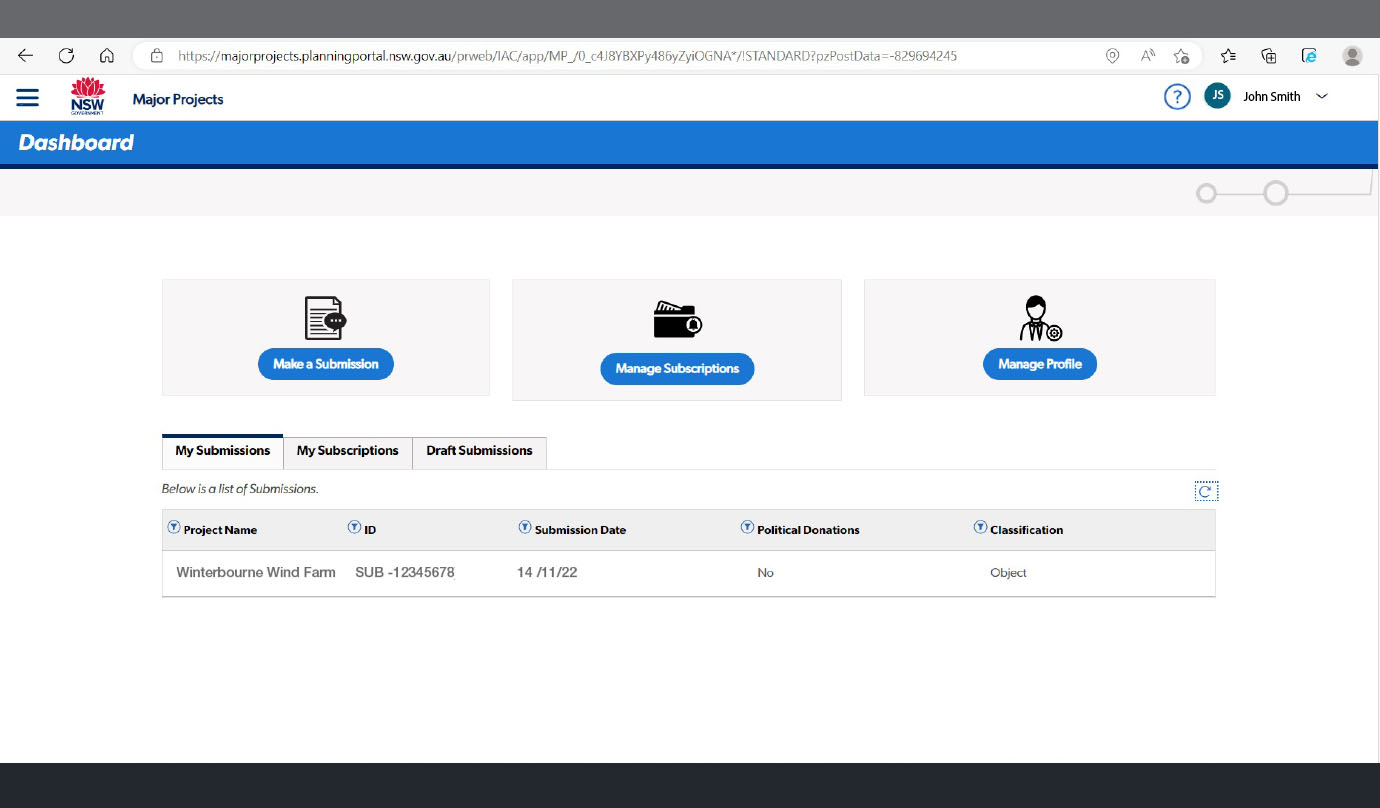
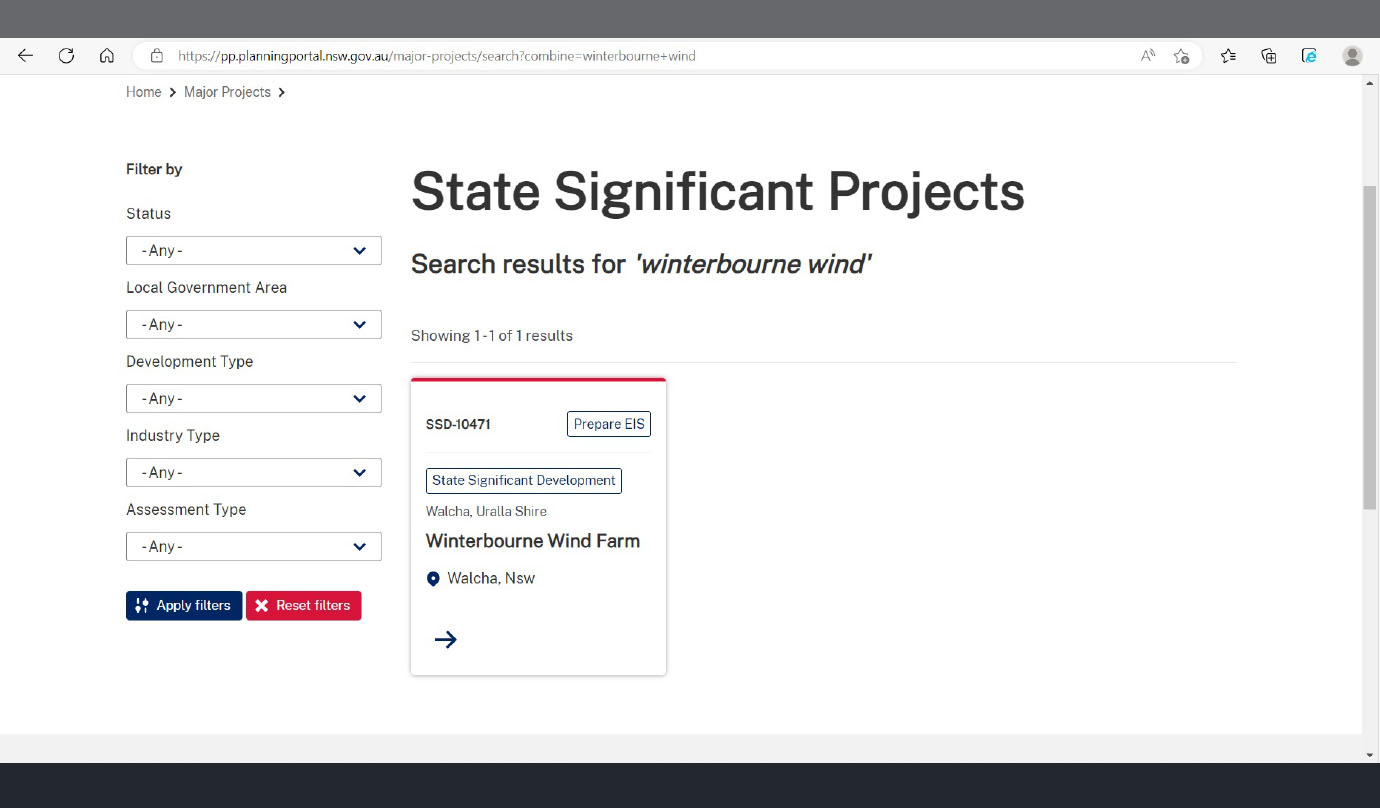
Click here
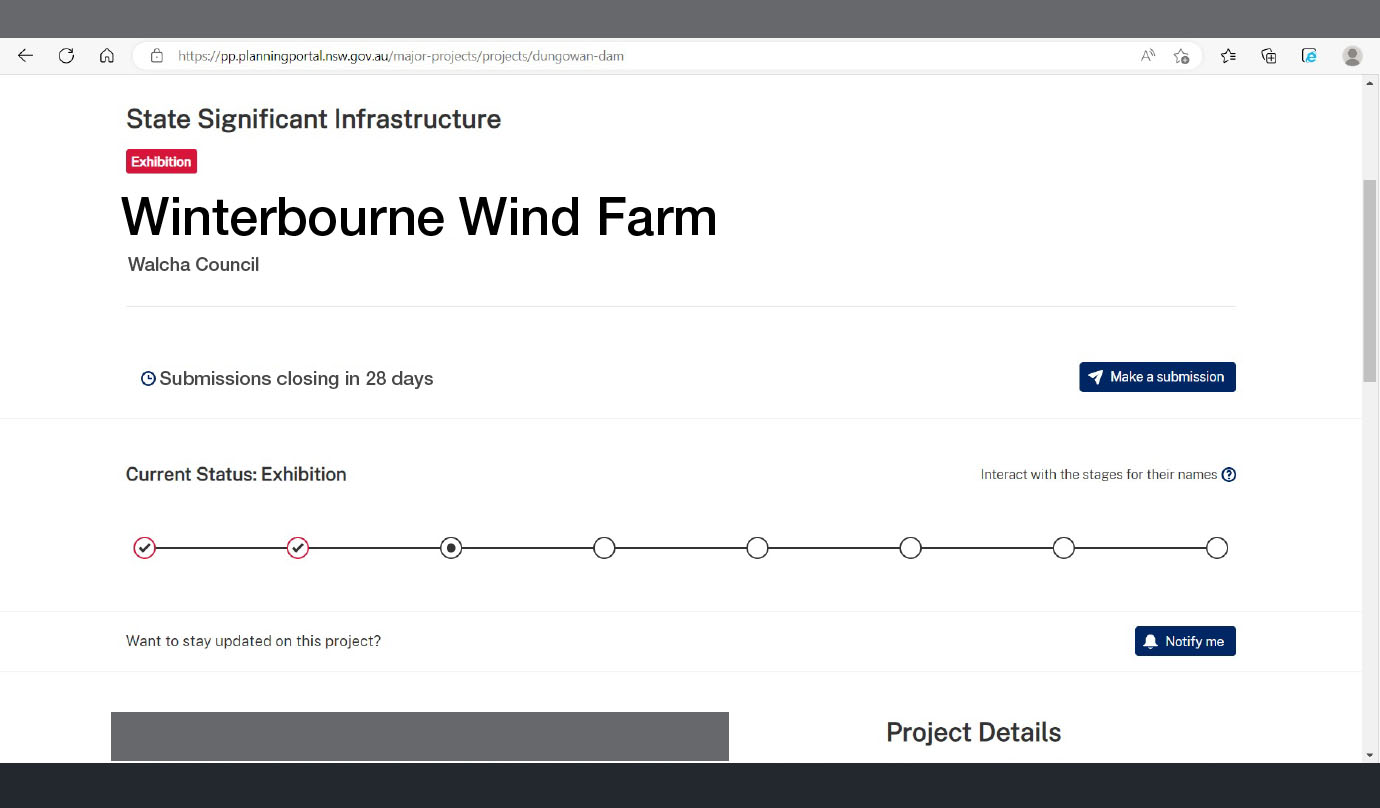
Click here
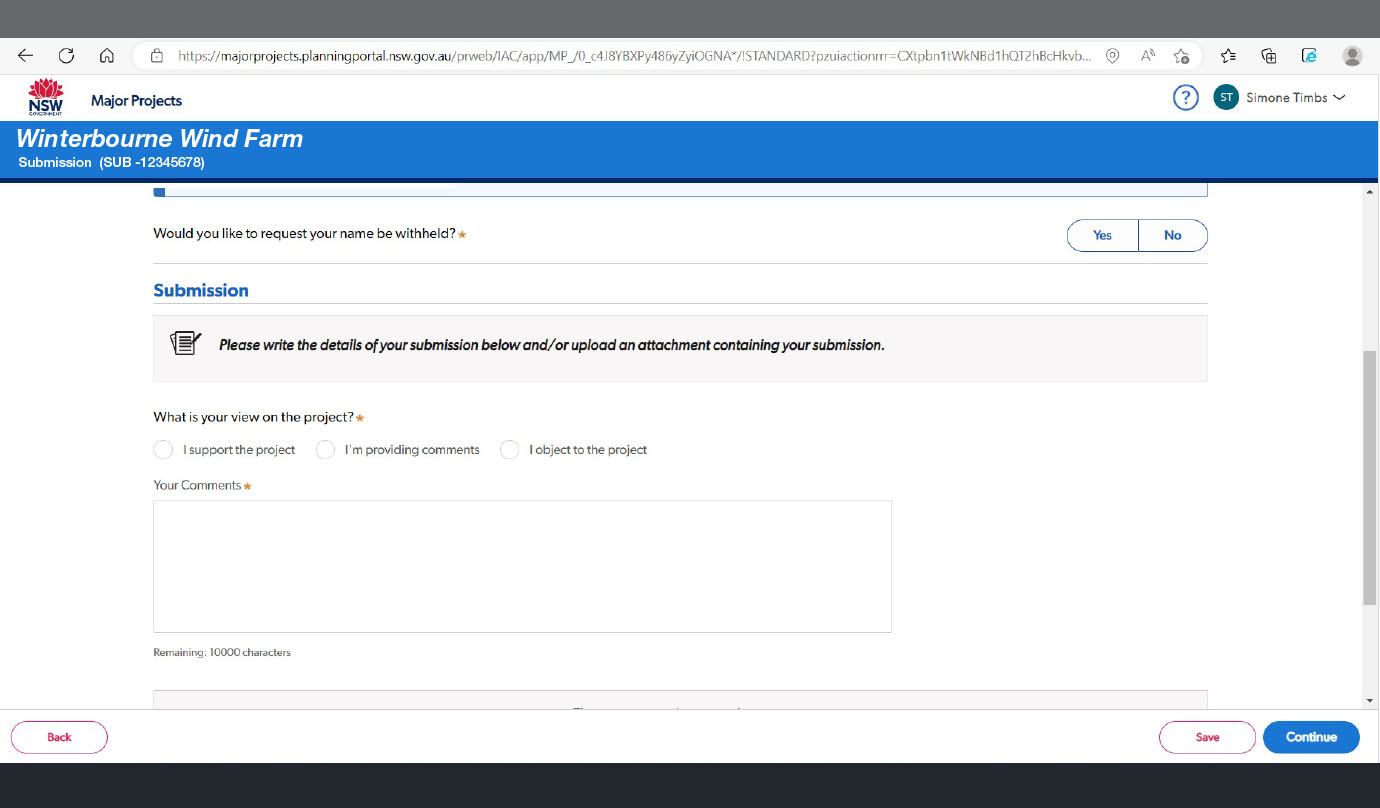
IMPORTANT!
If you choose to send a paper-based submission and it’s not addressed to the nominated contact person or team, the submission will not be received by the department and will be returned to sender.
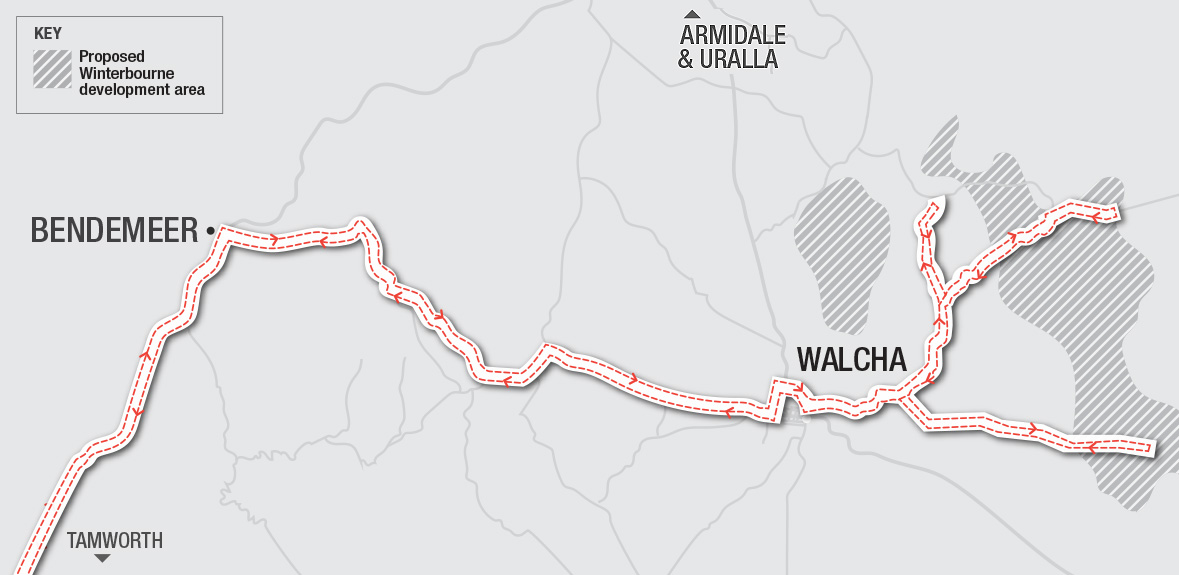
1. Vehicles will travel from Newcastle up the New England Highway to Bendemeer.
2. From Bendemeer turning right up the Oxley Highway to Walcha.
3. Turning left at the Sale Yards and along Darjeeling Road
4. Past Betts Transport and right onto Thunderbolts Way.
5. Then turning left at the Show Ground, past Brian Smith and Marchant’s yards
6. Heading east, out along the Emu Creek and Moona Plains Roads
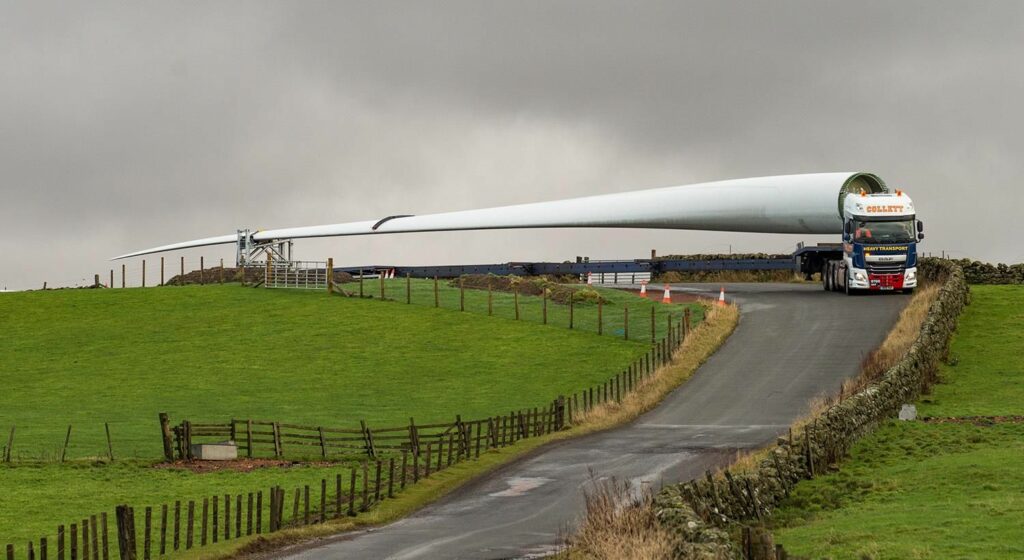
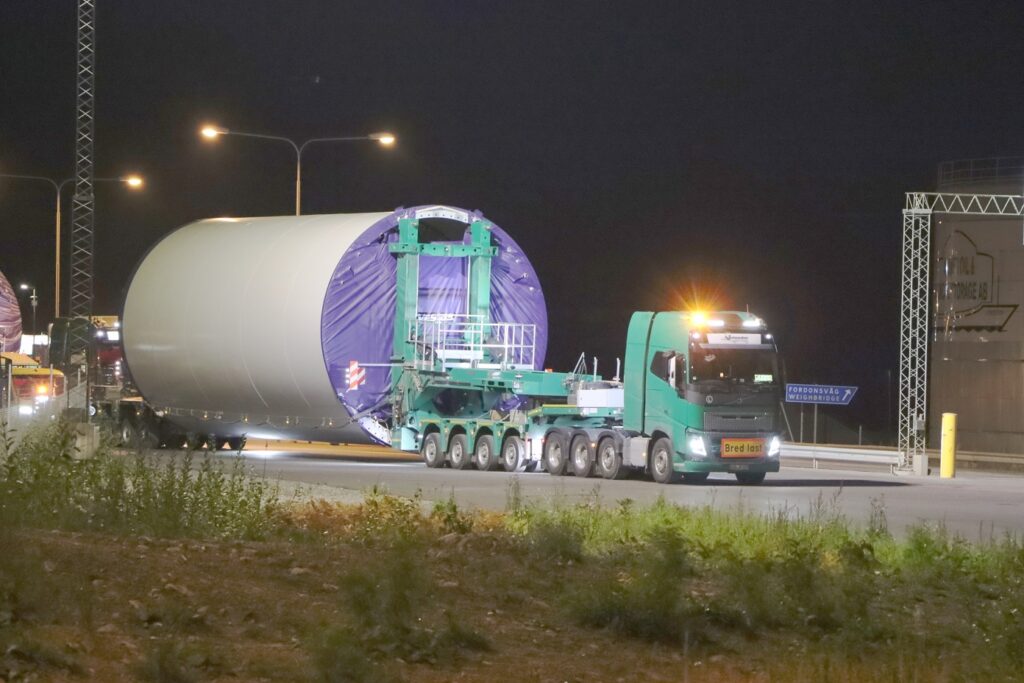






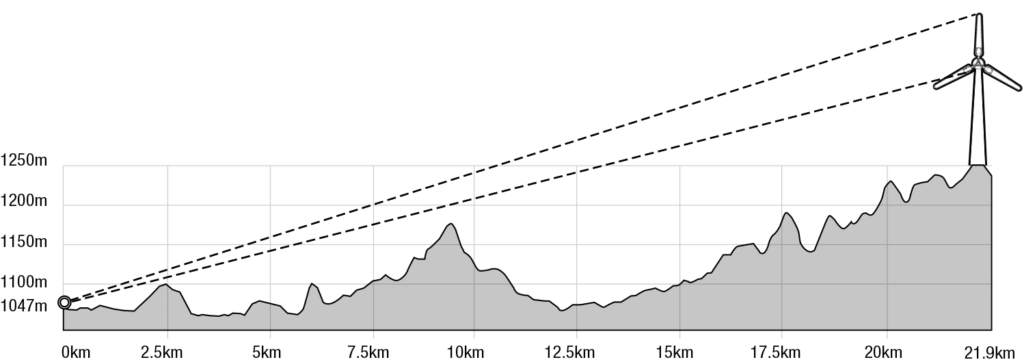
This project will cause impacts to local traffic and transport. If not properly dealt with in the EIS, this will end up being paid for by the ratepayer. At best, it will lead to extensive roadworks, further burdening traffic and transport.
Will also see significant road congestion from light vehicle movements at start and end of day, and heavy vehicles on main roads.
An example of congestion and blockages on the Bendemeer to Walcha road, with 90m long trucks (blades) 6m wide trucks (tower sections) blocking sections of road from traffic while travelling. Vestas have informed Voice for Walcha in a meeting that this trip could take 2 hours to complete, with sections of the road closed for long periods while extra long trucks carrying turbine blades negotiate bends and bridges.
... in the region, both connecting project to main line, and additional main lines, impacting on visual amenity for the community, and landholders.
... in our audible range for 1.5km, and further for effects of infrasound. Infrasound has had many recorded impacts on human and animal health, but very little scientific research has been commissioned to clarify this effect.
... during development, as the developer monopolises demand for services and materials. The availability of gravel, and other resources, as well as services such as earthmoving, trucks, trades and labour will all be affected.
Will this come at a cost to council and ratepayers From the meeting with Vestas 29th September 2022, we highlight that they estimate the requirement for 1.8ML of water per turbine, which they will have to either gain from drilling bores (as yet completely unplanned and un-prospected), or they will have to cart this water in. Calculating that 1.8ML = 72 trucks carrying 25,000L of water, for EACH turbine, or 220ML total. Over 8,500 semi-truck loads of water will be required for the Winterbourne Wind project. If a cattle property was running 500hd of beef cattle breeders, watering cattle though troughs, this would be enough water to last 40 years. If a bore is drilled successfully, this is an enormous amount of water to be dragged out of our aquifer system, affecting groundwater flows and future supply.
There is no bond included in the proposal, so a corporation with no asset value can walk away without fulfilling this obligation. We are told that there is commitment, but if there is an ability for an overseas company to deplete itself of financial reserves, the logical next step is to walk away from a large financial commitment. The Winterbourne Wind project has changed hands three times already, and we haven’t even sighted an EIS. Who will be carrying the can at the end of the life of the project?
Un-recyclable blades requiring landfill burial at end of life of project. Will this occur at Walcha, creating new landfill sites? Or will it occur elsewhere, requiring excessive and additional transport demands on our local roads, which is unlikely to be included in the transport reports, and the agreements with council for road repairs.
What about the impact of project waste? Where is rubbish and waste from the workforce going to be deposited? Where is material waste from the project going to be deposited? Is this noted in the EIS?
... of developer and lack of community awareness of project(s). It is an absolute requirement and expectation that the developer engages with the community early and fully. It is completely apparent that this has not been the case, and that many in the community are only now becoming aware of the shape and scale of this project. The decision of the developer to have invitational drop in sessions, rather than community wide forums, has had a very limiting impact on the general awareness of their planned activity. The developer has done the absolute minimum that they feel is necessary, and we argue that they have missed the target by a long way. Regardless of their claims, it is a fact that the vast majority of the community has not been informed adequately by the developer.
Not to mention the division of community and neighbourly relationships.
Specifically ... increased cost of long term housing, with many vulnerable renters being forced from affordable rent to skyrocketing rental costs.
Pressure on short term accommodation. As a workforce moves into the area, the limited supply of short term accommodation (Motels, hotels, B&B etc) will be swamped by this demand. Events such as weddings, race meetings, sporting events, festivals and tourism events will be impacted by the lack of accommodation options.
Pressure on health services and child care will increase as a temporary workforce places demands on these services.
Trades will be monopolised by a developers demands, leaving local community members short of options.
This fund designed by developer is estimated to contribute $0.5M to the community annually. Given that this project is estimated to generate around $150 million of revenue annually, (based on a conservative Power Purchase agreement in the $70/kW range) this seems an insignificant contribution to be making to a community that is absorbing significant negative impacts from the project. PPA agreements are likely to be well north of $70/kW.
Aboriginal community and heritage sites
Flora and fauna through construction process and follow up maintenance traffic.
Our agricultural industry – loss of access to agricultural land though construction exclusion, access roads and site areas. Impact on ability to make use of aerial services, including chemical spraying and spreading of fertilizer.
The impact on our ability to fight fires in the gorge country with planes/helicopters with CASA indicating to avoid areas with wind turbine constructions.
“As the blades of the turbines turn to generate electricity, it also has inadvertent consequences. It creates a disturbance in the air that can have far-reaching effects on the environment. The turbulence created by wind turbines is known to warm up the surface temperature at night and cool it down during the day. The warming can raise the temperature by up to 2.7℉ and cool it down by up to 0.7℉. The speed of the wind is affected by a wind farm. As the wind hits the turbines, it transfers its energy to the turbines producing electricity. However, this robs the wind of energy and speed. However, the wind picks up speed once it passes the wind farm. This slowing and accelerating of wind can negatively impact the precipitation in the region.”
We will see significant road congestion from light vehicle movements at start and end of day, and heavy vehicles on main roads throughout the day..
As an example, road users will encounter congestion and blockages on the Bendemeer to Walcha Road, with 90m long trucks (blades) 6m wide trucks (tower sections) blocking sections of road from traffic while travelling. Vestas have informed Voice for Walcha in a recent meeting that this trip could take 2 hours to complete, with sections of the road closed for long periods while extra-long trucks carrying turbine blades negotiate bends and bridges. It is expected that oversized trucks carrying 6m diameter tower sections will require 2 lanes to travel, further blocking sections of road for unknown periods of time.
This project will cause impacts to local roads, that are simply not designed for ultra heavy vehicles.
If not properly dealt with in the EIS, this will end up being paid for by the ratepayer.
At best, if the developer adequately deals with cost of road repair, it will lead to extensive roadworks, further burdening local traffic and transport.
Despite our local council having some control over access to roads, and therefore some negotiating power over road upgrades, what happens at the end of the project, when we have no negotiating power to hold the developer to account, when road repair is required?
... in the region, both connecting project to main line, and additional main lines, impacting on visual amenity for the community, and landholders.
The powerlines follow the project. If there is no project, there is no requirement for powerlines to travel thrugh the Walcha district.
... in our audible range for 1.5km, and further for effects of infrasound. Infrasound has had many recorded impacts on human and animal health, but very little scientific research has been commissioned to clarify this effect.
... during development, as the developer monopolises demand for services and materials. The availability of gravel, and other resources, as well as services such as earthmoving, trucks, trades and labour will all be affected.
Will this come at a cost to council and ratepayers From the meeting with Vestas 29th September 2022, we highlight that they estimate the requirement for 1.8ML of water per turbine, which they will have to either gain from drilling bores (as yet completely unplanned and un-prospected), or they will have to cart this water in. Calculating that 1.8ML = 72 trucks carrying 25,000L of water, for EACH turbine, or 220ML total. Over 8,500 semi-truck loads of water will be required for the Winterbourne Wind project. If a cattle property was running 500hd of beef cattle breeders, watering cattle though troughs, this would be enough water to last 40 years. If a bore is drilled successfully, this is an enormous amount of water to be dragged out of our aquifer system, affecting groundwater flows and future supply. We are told that no work has been carried out to scope for underground water supply, so if this is not found, then water will be transported in by truck. At 1.8ML per tower, that equates to over 8,500 semi trailer trucks carting 22,000L of water. This is ADDITIONAL the traffic plan already circulated by Vestas.
There is no bond included in the proposal, so a corporation with no asset value can walk away without fulfilling this obligation. We are told that there is commitment, but if there is an ability for an overseas company to deplete itself of financial reserves, the logical next step is to walk away from a large financial commitment. The Winterbourne Wind project has changed hands three times already, and we haven’t even sighted an EIS. Who will be carrying the can at the end of the life of the project?
Un-recyclable blades requiring landfill burial at end of life of project. Will this occur at Walcha, creating new landfill sites? Or will it occur elsewhere, requiring excessive and additional transport demands on our local roads, which is unlikely to be included in the transport reports, and the agreements with council for road repairs.
What about the impact of project waste? Where is rubbish and waste from the workforce going to be deposited? Where is material waste from the project going to be deposited? Is this noted in the EIS?
... of developer and lack of community awareness of project(s). It is an absolute requirement and expectation that the developer engages with the community early and fully. It is completely apparent that this has not been the case, and that many in the community are only now becoming aware of the shape and scale of this project. The decision of the developer to have invitational drop in sessions, rather than community wide forums, has had a very limiting impact on the general awareness of their planned activity. The developer has done the absolute minimum that they feel is necessary, and we argue that they have missed the target by a long way. Regardless of their claims, it is a fact that the vast majority of the community has not been informed adequately by the developer.
Not to mention the division of community and neighbourly relationships.
Specifically ... increased cost of long term housing, with many vulnerable renters being forced from affordable rent to skyrocketing rental costs.
Pressure on short term accommodation. As a workforce moves into the area, the limited supply of short term accommodation (Motels, hotels, B&B etc) will be swamped by this demand. Events such as weddings, race meetings, sporting events, festivals and tourism events will be impacted by the lack of accommodation options.
Pressure on health services and child care will increase as a temporary workforce places demands on these services.
Trades will be monopolised by a developers demands, leaving local community members short of options.
This fund designed by developer is estimated to contribute $0.5M to the community annually. Given that this project is estimated to generate around $150 million of revenue annually, (based on a conservative Power Purchase agreement in the $70/kW range) this seems an insignificant contribution to be making to a community that is absorbing significant negative impacts from the project. PPA agreements are likely to be well north of $70/kW.
Aboriginal community and heritage sites
Flora and fauna through construction process and follow up maintenance traffic.
Our agricultural industry – loss of access to agricultural land though construction exclusion, access roads and site areas. Impact on ability to make use of aerial services, including chemical spraying and spreading of fertilizer.
The impact on our ability to fight fires in the gorge country with planes/helicopters with CASA indicating to avoid areas with wind turbine constructions.
During recent fire events, being able to fight fires at the rim of the gorge with aerial services was critical to saving homes, livestock and pastures, and more. The very presence of wind turbines threatens the ability to fight fires with aerial services, as advised by CASA.
This will be the case for 30 - 60 years if this project proceeds.
“As the blades of the turbines turn to generate electricity, it also has inadvertent consequences. It creates a disturbance in the air that can have far-reaching effects on the environment. The turbulence created by wind turbines is known to warm up the surface temperature at night and cool it down during the day. The warming can raise the temperature by up to 2.7℉ and cool it down by up to 0.7℉. The speed of the wind is affected by a wind farm. As the wind hits the turbines, it transfers its energy to the turbines producing electricity. However, this robs the wind of energy and speed. However, the wind picks up speed once it passes the wind farm. This slowing and accelerating of wind can negatively impact the precipitation in the region.”